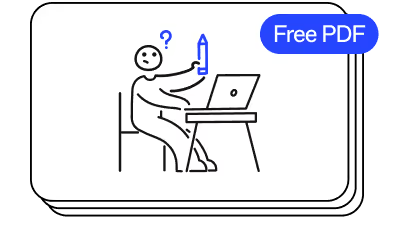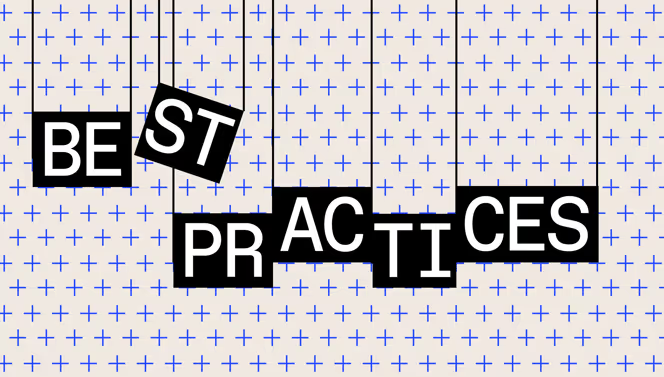How performance coaching boosts productivity

Addressing poor performance template

High performance stems from great leadership. But a crucial part of leadership is clear direction. Without it, employee performance suffers. To make sure employees know they’re on the right track and how to improve, they need consistent constructive feedback.
One great way to introduce this is through performance coaching.
Performance coaching helps boost workplace productivity and accelerate talent development with structured, actionable guidance. This article outlines how performance coaching works and offers a step-by-step guide for success.
What is a performance coach?
A performance coach is someone who works with individuals to develop their skills. Coaching often focuses on areas an employee needs to improve, such as:
- Skill development: From hard skills like coding or writing to soft skills like time management and leadership, coaches work with employees to develop specific strengths.
- Goal setting: Employees who want to hit higher targets or earn promotions might work to set better goals with coaches.
- Boost productivity: Workers who have the potential to perform better learn how through supportive coaching.
Initially, a performance coach may discuss career plans with an employee, set goals to help them grow, and outline skills they need to advance. Later in the relationship, a performance coach may simply provide accountability or encouragement.
Although professional performance coaches exist, anyone can engage with the process. For example, managers might work with their reports to coach development. By using data-driven insights, they can set precise performance goals that support employee growth. Platforms like Workleap Officevibe collect real-time feedback and personal growth insights that managers can use.
The importance of performance coaching for businesses
Performance coaching can improve employee productivity and efficiency, benefiting the entire organization. According to an insight report from coaching company BetterUp, organizations with a strong coaching culture see 27% higher year-on-year growth and a 24% boost in individuals’ performance.
BetterUp’s research also indicates that when employees feel supported through coaching, they’re more likely to be engaged. They report higher job satisfaction, leading to higher retention. Coaching can even teach workers valuable skills around work-life balance, stress management, and focus techniques.
Benefits of performance coaching
A performance coach guides employees toward better results in the workplace. Here are a few ways how:
- Employee engagement: Employees who receive consistent feedback from coaches and see results are more likely to feel more aligned with the company’s mission, which can translate into higher engagement.
- Employee productivity: Coaching helps employees identify where performance falls short and sets goals to course-correct. Progress toward these goals usually means better work and higher productivity.
- Accountability: The ongoing support of a coach creates accountability, driving progress toward meeting goals.
- Leadership skills: Through the coaching process, employees may develop stronger leadership skills as they take more initiative and grow in their roles.
- Employee retention: Supporting growth with performance coaching shows employees they’re valued, boosting loyalty. Loyal employees are likely to stay, and higher retention saves companies thousands in hiring costs.
Workleap Performance centralizes feedback and performance history, letting managers easily measure employee growth over time.
What are the steps of employee performance coaching?
Although specific guidance varies from employee to employee, there’s a standard coaching structure.
Here are the steps that professional performance coaching follows and how you can implement them.
Step 1. Assessment
The first stage is taking stock of where your employee currently stands. Assess their current skills, review their strengths and performance history, and outline initial areas for improvement. Performance management works best when the coach is completely clear about how they plan to help the employee.
Using the right tools can help paint a clear picture of an employee’s current performance and engagement, so you can establish a baseline that demonstrates measured improvement over time.
Step 2. Goal setting
Work together with your employee to pinpoint where they’d like to grow or improve. If they have any specific career goals or aspirations, try to prioritize these. Collaboratively, define clear, achievable objectives that align with the employee’s personal and organizational needs.
An effective coaching strategy will outline the actions, timeliness, and metrics used to monitor progress and success.
Step 3. Strategy development
After defining which goals your employee will pursue, outline exactly how to achieve them. Begin by breaking goals into smaller milestones, providing the resources and guidance needed to meet them at each stage. A progressive, iterative approach makes objectives feel more achievable, avoiding employee burnout.
Step 4. Implementation
With goals in place, it’s time for your employee to work toward reaching them. Remind them of the resources available to them throughout the process. It’s important to regularly check in to monitor their progress, while also providing encouragement. Regular coaching sessions also provide accountability and keep objectives front-of-mind.
For example, if an executive is undergoing leadership development, coaching sessions may focus on skills development. For more junior employees, sessions may involve reviewing constructive feedback and identifying how to apply it.
Step 5. Feedback and adjustment
A two-way feedback cycle helps the process run more smoothly. Employees can offer insight on how sessions could be more useful, and coaches can let workers know if they’re approaching things correctly. Continuous constructive feedback can give employees a better understanding of exactly how they can improve performance. Manager feedback also acknowledges efforts being made, boosting engagement with the process.
Workleap Officevibe streamlines the requesting and collection of feedback. The platform’s easy-to-use feedback forms allow employees to share their thoughts about the process without interrupting their workflow. Coaches and managers can then see and act on their comments in the Officevibe interface.
Step 6. Review and evaluation
Revisit the initial goals after the first few months. This provides an opportunity to review progress and celebrate how far your employee has come. Recognizing their work and highlighting their accomplishments keeps them motivated and feeling positive.
Using Workleap Performance, coaches can analyze how much an employee has improved against criteria established early in the process. This data-first strategy brings a level of objectivity to feedback, showing measurable progress and reinforcing accountability.
Performance coaching examples
Business performance coaching benefits individuals at any stage of their career. Here are a few examples that demonstrate how coaches provide guidance.
Leadership development
When choosing an employee for a leadership position, it's important that they already have the necessary skills. Leadership development coaching offers structured guidance and targeted feedback to accelerate this process, helping prepare employees for advancement at the company.
For employees already in leadership positions, coaching can help them improve through project-related performance goals. For example, objectives such as high team engagement and performance enable them to demonstrate their people management skills.
Sales or client-facing roles
A performance coach can help a client-facing employee hone communication and negotiation skills. Objectives may include higher close rates or customer satisfaction scores. Regular check-ins allow individuals to discuss strategies they can employ, thereby enhancing their confidence and leading to improved overall performance.
Technical or functional skills
Coaching can focus on developing specific skills that allow an employee to thrive in their role. For example, it could teach them about a new operational process or how to master new software.
Setting measurable goals like speed, proficiency, or accuracy helps track performance over time and demonstrate improvement.
Making performance coaching actionable with Workleap
Performance coaching helps accelerate employee improvement and leads to organization-wide productivity gains. A coach oversees an individual’s progression, providing guidance, actionable feedback, and data-driven insights. It’s a powerful strategy that every organization should turn to.
Workleap Performance centralizes all the data needed to provide the best possible guidance. Paired with Workleap Officevibe, which captures real-time employee and manager feedback, individuals will have all the support they need to hit their performance coaching targets.
Discover how performance coaching can drive employee productivity with a Workleap demo today.
FAQs
What’s the best HR software for combining coaching with performance tracking?
Platforms that integrate coaching activities with goal tracking give managers a more complete view of employee progress. Workleap Performance supports both by offering structured one-on-ones, coaching notes, and goal progress monitoring in the same place.
What’s the best alternative to traditional performance reviews?
A coaching-first approach is one of the strongest alternatives to traditional reviews. Workleap Performance helps managers adopt this model with tools for ongoing feedback, structured one-on-ones, and flexible review cycles.For a thoughtful conversation on moving beyond old review methods, explore this episode.
Which HR software is best for managing performance reviews and continuous coaching for clinical staff?
Clinical teams often need a platform that provides structure, clarity, and consistent documentation. Workleap Performance supports this by combining customizable review templates with ongoing coaching tools, enabling managers to guide development while maintaining reliable records.
Career development plan template


%20(1).avif)


.avif)
.avif)

%202.avif)




.avif)

